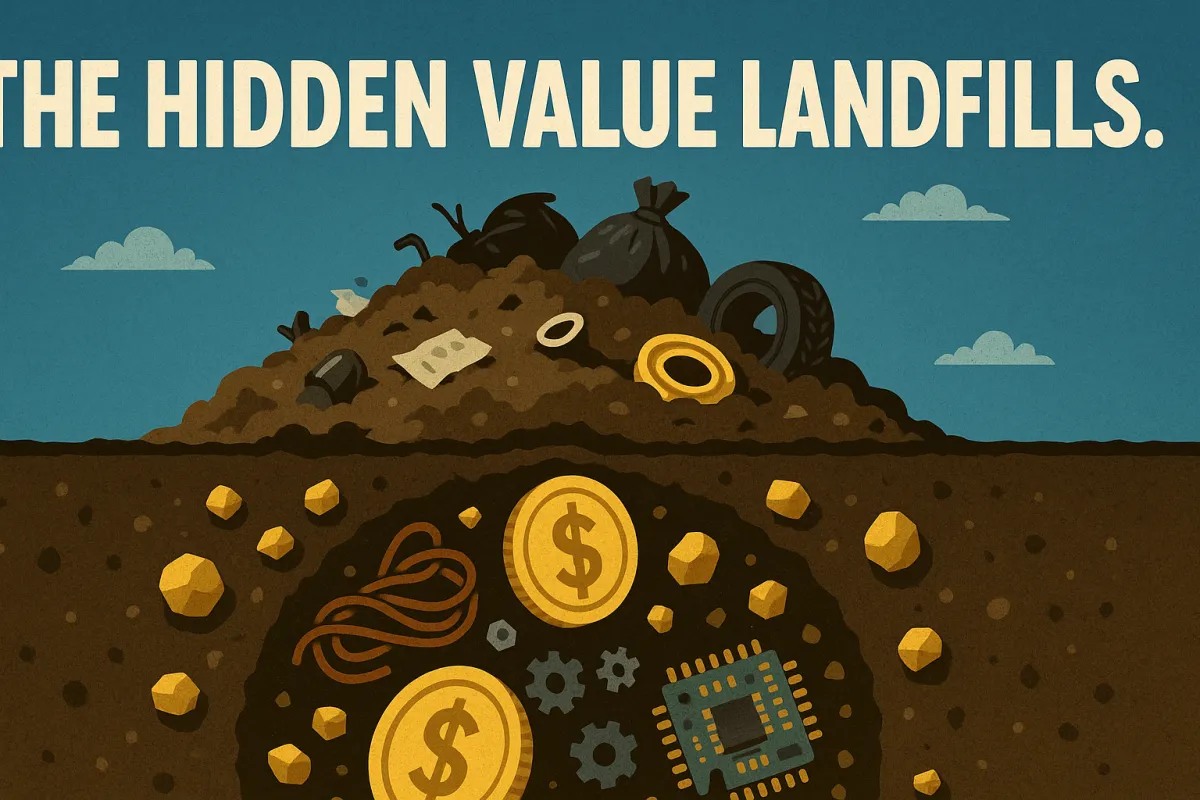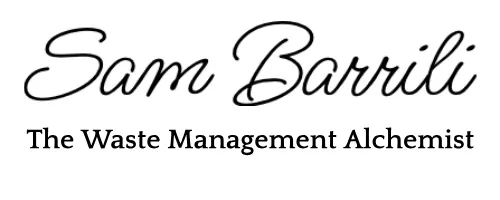Articles

The Gold You’re Ignoring: How Your Closed Landfill Could Become Your Most Valuable Asset in 2025
Let me ask you a blunt question—what’s buried under your feet?
If you're the owner, operator, or manager of a landfill—especially one that's capped, dormant, or nearing end-of-life—then what you may consider “sunk cost” is in fact a sleeping asset worth millions.
Now, this isn’t another TED Talk-style pep speech about sustainability or saving the planet. That’s not what I do.
What I do is help waste companies identify untapped cashflows hidden in what the rest of the market still calls “waste.” I’ve done it in the U.S., Europe, the Middle East, and across Africa. And today, I’m here to tell you: closed landfills are the biggest urban mining opportunity of the next decade.
Yes—landfill mining is real. It’s legal. It’s profitable. And it's aligned with current EPA regulatory frameworks for both remediation and redevelopment.
You just have to see it through the right lens.
💣 The Lie We’ve Been Sold About Landfills
For the last 40 years, landfill operators have been boxed into a singular business model:
Take in waste.
Collect tipping fees.
Cap the site.
Monitor and maintain it at your cost for decades.
No new revenue. No material recovery. Just liabilities, permits, and monthly methane reports.
But this mindset is not only outdated—it’s dangerous.
Why? Because it blinds you to what landfill managers in Germany, the Netherlands, and even parts of California already know:
Beneath every landfill is a stockpile of secondary raw materials—metals, plastics, aggregates, even rare earths—that are in explosive demand due to global supply chain disruption and rising import tariffs.
Let’s talk about what’s really in that “waste.”
🧱 What You’re Sitting On: The Underground Inventory
Most legacy U.S. landfills contain an average of:
10–20% scrap metals (ferrous + non-ferrous: aluminum, copper, lead, steel)
20–30% construction & demolition debris (reusable aggregates, drywall, rebar)
5–7% WEEE and e-waste remnants (gold, silver, rare earths)
40%+ organic material, often recoverable as soil or biogas
Now, think about this: with aluminum prices up, copper being the lifeblood of EVs, and e-waste now worth $62 billion annually, you don’t have a landfill—you have a mine.
⚖️ EPA Says Yes—If You Do It Right
You might be asking: “Sam, can I even touch this stuff without legal nightmares?”
Here’s the good news: YES—but only if you align with regulatory best practices.
The EPA’s Brownfields Program now explicitly funds the remediation and redevelopment of contaminated former landfills—especially when the project includes:
Soil remediation (through thermal, bioremediation, or phytoremediation)
Recovery of recyclable materials
Reuse of the site for solar farms, logistics centers, or green industry
This is not theory—it’s been executed in states like Colorado, Minnesota, and Pennsylvania with millions in public-private grants.
So the question is: Why aren’t you doing it yet?
🧠 From Dump to Profit: The Urban Mining Blueprint
Let me walk you through the 3-part strategy I’ve used with my private clients:
1. Phase One: Remediation First
We begin with an EPA-aligned soil and leachate assessment. This allows us to:
Identify contaminants (like lead, arsenic, PFAS)
Select the appropriate remediation technique (stabilization, extraction, or cover-layer reconstruction)
✅ Grants available: Brownfield Redevelopment Funds, Renewable Energy Incentives
2. Phase Two: Material Recovery
This is where the revenue starts:
Excavation + screening + AI-enhanced sorting = metals, plastics, aggregates ready for resale
Materials sold directly to manufacturers, smelters, or export markets
Special value: old electronics, HVAC units, batteries, brass components
✅ Average net recovery: $60–$200 per ton, depending on stream and contamination levels
3. Phase Three: Redevelopment
After cleanup and recovery, we reposition the land as:
A renewable energy hub (landfill solar is booming)
A logistics depot
Or even commercial/industrial space leased long-term
✅ Double ROI: land value + recurring revenue
💼 Who Should Pay Attention?
Let me be direct—this isn’t for everyone.
But if you:
Manage a capped landfill built between the 1970s and 2000s
Are spending money every month on monitoring and compliance
Want to create a new revenue stream without buying new land
Are open to private-public partnerships and leveraging federal remediation grants
… then you’re sitting on a time-sensitive opportunity.
Because the longer you wait, the more competitive this space becomes.
🔥 Why You Must Act Now
Tariffs on critical metals have skyrocketed (145% on copper from China)
The U.S. is aggressively reducing imports through the Inflation Reduction Act
Buyers are desperate for domestic sources of SRMs
EPA incentives are available now but are being snapped up by forward-thinking operators
"In 3 years, this market will be saturated. In 6 years, it will be institutionalized. Today, it’s still wide open."
— Samuele “Sam” Barrili
🧲 Want to Know If Your Landfill Qualifies?
I’ve reserved time in my calendar for a limited number of landfill managers who want to evaluate the real value buried under their land.
👉 This is a no-pitch, 20-minute strategic call.
We’ll review your current site, regulatory status, and material profile—and I’ll tell you exactly what potential exists in your case.
Book your free call here:
📅 https://sambarrili.com/schedule-free-20min-call
But do it now. Because when this market moves—and it will—the ones who knew what they had underground will be the ones selling back to the supply chain… at a premium.
Don’t let your landfill die a slow, expensive death.
Turn it into your most valuable asset.
To your next million buried in plain sight,
Sam Barrili
The Waste Management Alchemist
www.sambarrili.com


Sam Barrili
I'm known as the go-to guy for talking about business strategies and growth strategies for waste management companies.
I started my journey in this field in 2009 when I finished my degree in Toxicological Chemistry and joined a wastewater treatment company to develop its market.
Since then, I helped dozens of waste management companies in America and Europe increase their annual profits by over 25 million dollars thanks to my SAM Method.
If you want to know if I'm a good fit for you, read an article or watch a video.
If you find it helpful, I’m probably a good match.
If not, that's OK too.
Call +1 (801) 804-5730
Email: [email protected]

